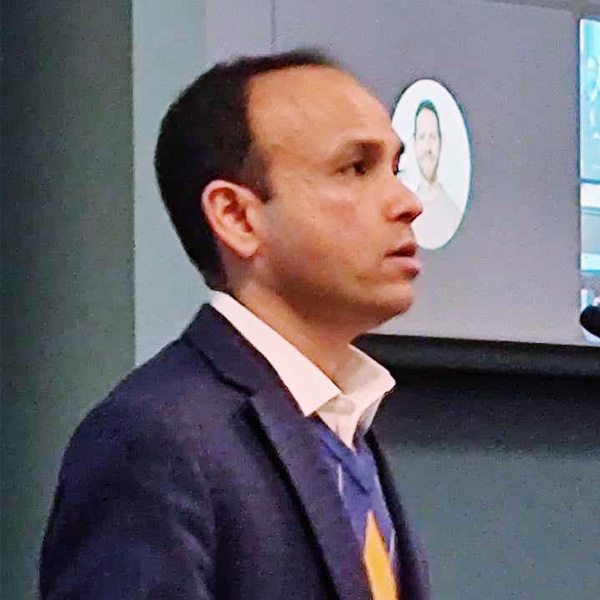Backers of an effort to create the framework for an independent Western RTO know how much money they’ll need to get things off the ground this year. Now they’re seeking funders to help foot the bills.
“We have a budget estimate of about $570,000 to get us through the next several months,” Jim Shetler, general manager of the Balancing Authority of Northern California, said during a Jan. 19 virtual meeting of the West-Wide Governance Pathways Initiative (WWGPI).
Shetler is co-chair of the initiative’s Priority Admin Work Group, part of the Launch Committee tasked with establishing the entity.
Kathleen Staks, executive director of Western Freedom and the Launch Committee’s co-chair, said donations will help cover costs for the legal analysis the group will perform over the next few weeks, project management and the creation of a nominating committee to select the entity’s board of directors.
Staks encouraged meeting participants to contact their Pathways Initiative sector representative to arrange donations and said she was “feeling very positive” about the diverse set of commitments the group has received so far.
“I know for us an area of information that’s important is the disclosure of funding and who is funding — and the amounts,” Puget Sound Energy’s Jessica Zahnow said. “I really appreciate what you shared today about the bridge funding for the $570,000, and it sounds like that’s expected to kind of bridge for a period of months. But disclosures around that [are] really helpful as we see who’s engaged.”
Staks also told stakeholders the Pathways Initiative on Jan. 18 submitted its application to the Department of Energy to obtain $400,000 in annual funding over the next two years through an agency Funding Opportunity Announcement.
“This was the full application for the stakeholder engagement framework project proposed in the concept paper last fall,” Staks told RTO Insider in an email. (See Western RTO Group Seeking $800K in DOE Funding.)
That paper explained the need for the grants and described how they would be used, including to support “leadership, staffing, virtual meetings and administrative support”; facilitate four in-person meetings per year; and provide funding for 50 people to attend those quarterly gatherings.
Staks said the committee soon will post the proposal it submitted with the DOE application on the initiative’s landing page on the Western Interstate Energy Board website.
Definition of ‘Manage’
Speaking for the Launch Committee’s Functions and Scope Work Group, Evelyn Kahl, director of policy for Cal-CCA, told meeting participants that, after reviewing 16 law firms, the committee selected Perkins Coie to perform legal analysis for the effort.
The firm will first tackle what changes to California law would be needed to shift parts of CAISO’s governance to either the Western Energy Imbalance Market or a new regional organization. That analysis will factor in the range of Pathways Initiative governance options the committee shared with stakeholders at its meeting last month. (See Western RTO Initiative Outlines Governance Options.)
“Central” to the analysis, Kahl said, is California Public Utilities Commission Code Section 345.5 and state Corporations Code 5210, which oblige CAISO to “manage” the state’s electricity market.
“We’ll be assessing what ‘management’ means under these statutes, and in approaching the question, we’ll be looking at various aspects of governance, like the level of authority that’s granted to the WEIM, or regional organization, and whether it’s joint, primary or sole jurisdiction relative to the CAISO,” Kahl said.
“There’s a general sense that there may be changes that we can make without a change in California law to move the needle toward independent governance, but that somewhere along the spectrum, we’re going to be required to make a change to California law. So, we’re trying to figure out where is that and what kind of changes will be required,” she said.
Staks told RTO Insider the committee hopes to complete the legal analysis within the next couple of months.
“The analysis will help the Launch Committee identify the preferred structure, functions and scope of the new regional organization, including the legislative and legal steps and timing necessary to get there,” she said.
Asked whether the committee hopes to finish in time to influence the current California legislative session, Staks said the group “does not engage in any lobbying efforts in California or any other state.”
Getting It Right
During the Jan. 19 meeting, Lauren Tenney Dennison, director of market policy and grid strategy with the Public Power Council, asked whether the Launch Committee still expected to stand up an independent entity by late spring, in line with an earlier schedule.
Staks said the group still is trying to “nail down” the timeline and will not hit that target.
“I think we want to make sure we get the legal analysis done, and that is really going to help us make a more concrete decision and timeline that is associated with where we ultimately want to go with this,” Staks said.
Group members “are really committed to doing this as thoroughly and with as much input to increase our likelihood of success,” Staks said. “So, the timeline as we originally thought has shifted, but I think that’s OK.”
